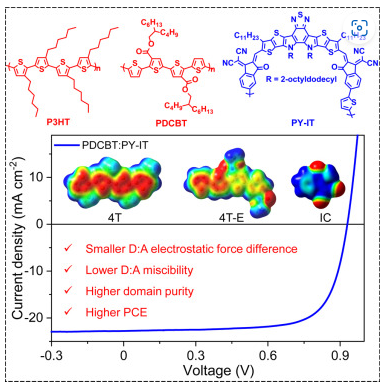Morphology control by tuning electrostatic interactions for efficient polythiophene-based all-polymer solar cells
Ma et al.,
solar cells, Chem (2023),
https://doi.org/10.1016/j.chempr.2023.04.021
Polythiophenes, while cost-effective, lag behind in organic solar cells. Researchers studied polythiophene:polymer acceptor (PY-IT) interactions, highlighting the role of electrostatic forces. Introducing electron-withdrawing groups to P3HT reduced intermolecular interactions, improving blend miscibility. This led to a record-high 15.3% power conversion efficiency in PDCBT, advancing polythiophene-based all-polymer solar cells for practical use.

